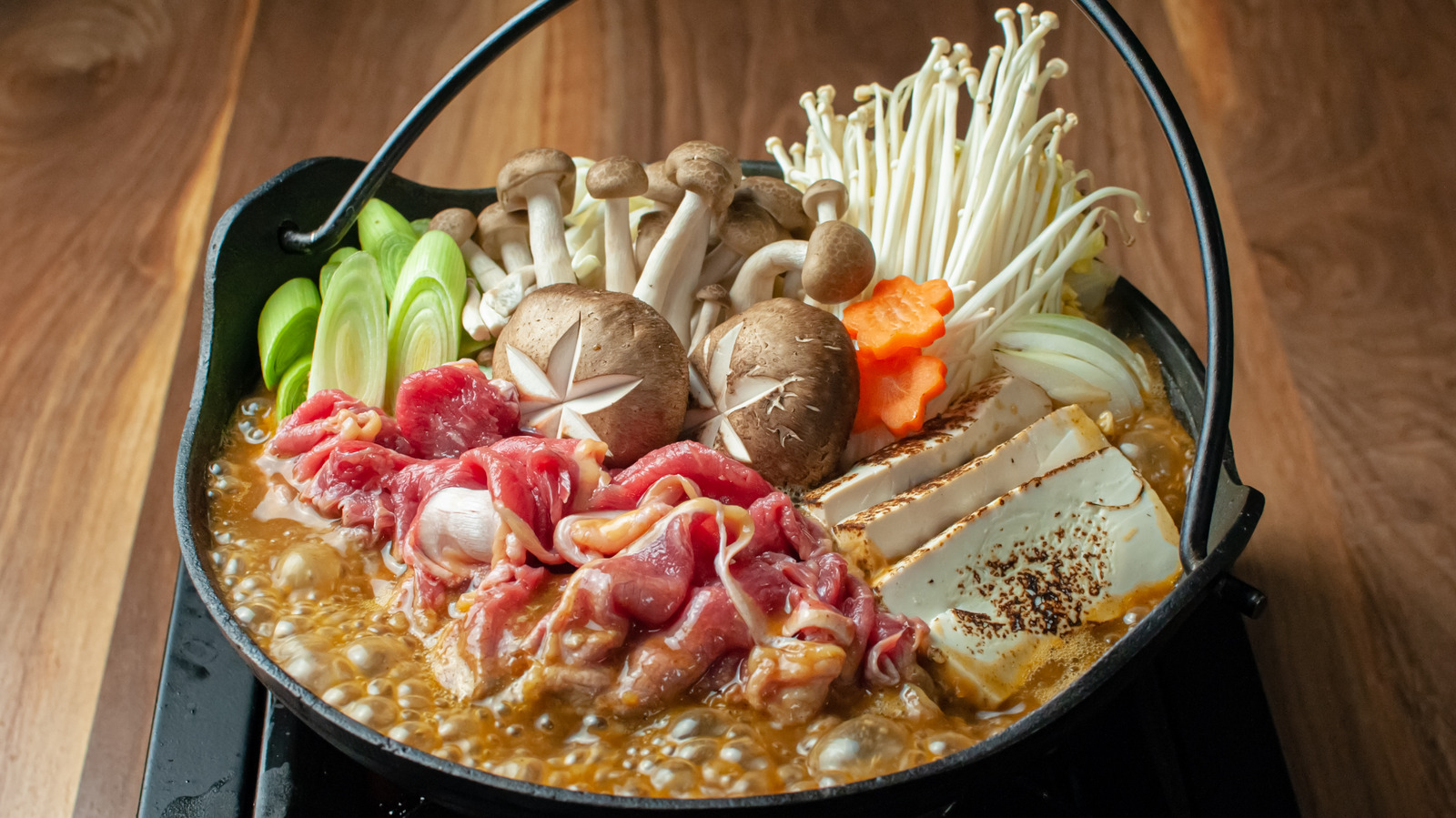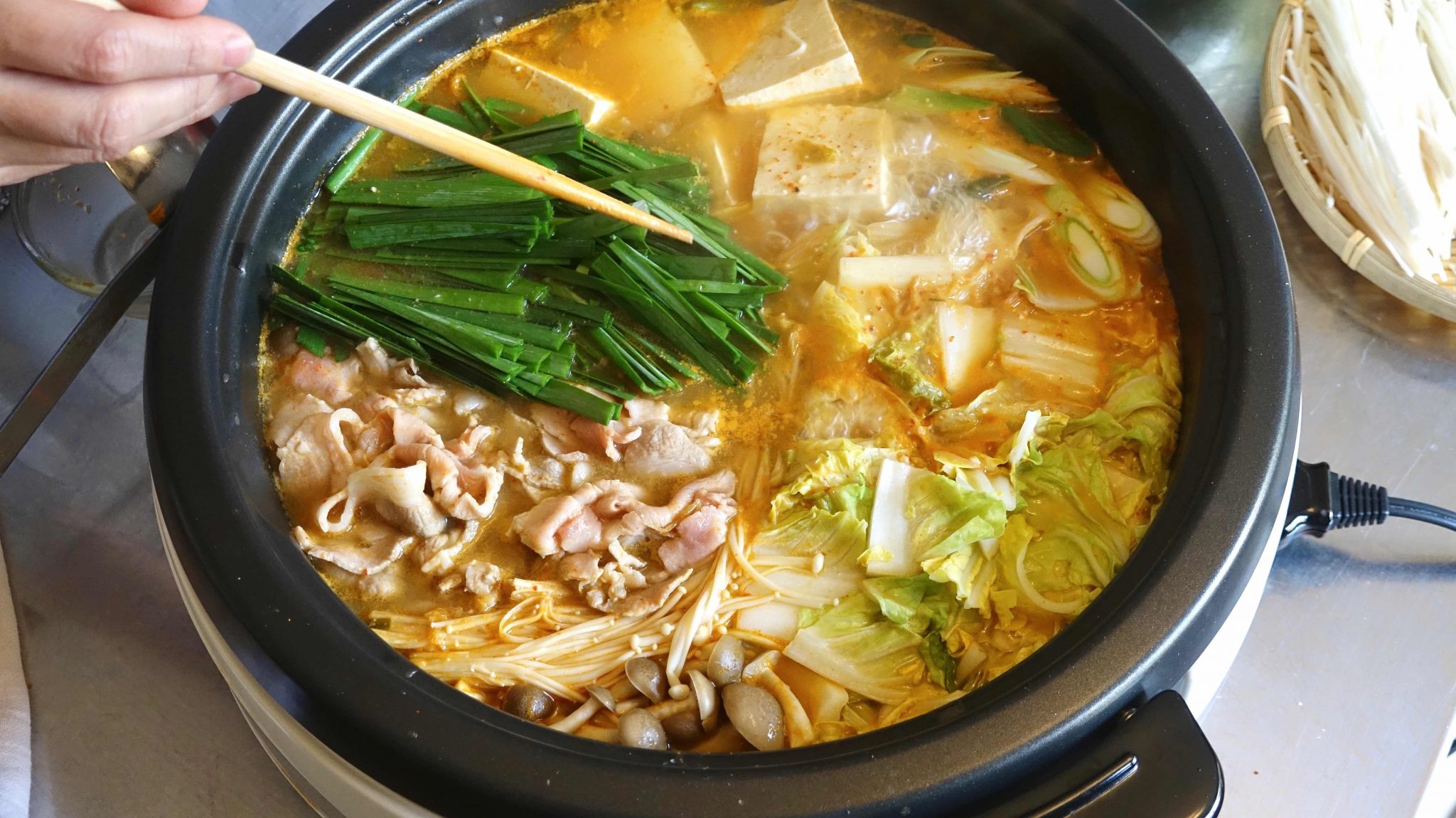Embark on a culinary adventure into the heart of Japanese cuisine with our comprehensive guide to nabe pot recipes. These hearty and flavorful dishes, synonymous with warmth and convivial gatherings, have been a cornerstone of Japanese dining for centuries.
From its historical origins to its diverse regional variations, nabe pot transcends mere sustenance, offering a rich tapestry of flavors, textures, and cultural significance. Join us as we delve into the world of nabe pots, unlocking the secrets of their preparation, exploring their nutritional benefits, and discovering the etiquette that surrounds this beloved culinary tradition.
Nabe Pot
Nabemono, also known as nabe pot, is a Japanese one-pot dish that has been enjoyed for centuries. It consists of a variety of ingredients, such as vegetables, meat, seafood, and tofu, simmered in a flavorful broth.
History and Origin
The origins of nabe pot can be traced back to the Jomon period (14,000-300 BCE), when earthenware pots were used to cook food over open fires. Over time, the nabe pot evolved, and by the Edo period (1603-1868), it had become a popular dish among all social classes.
Cultural Significance and Variations
Nabe pot holds a special place in Japanese culture. It is often served during the winter months as a way to warm up and share a meal with family and friends. There are many regional variations of nabe pot, each with its own unique ingredients and flavors.
- Chanko-nabe: A hearty stew popular among sumo wrestlers, made with chicken, vegetables, and tofu.
- Yose-nabe: A simple nabe pot made with leftover ingredients, often served at the end of a party.
- Kimchi-nabe: A spicy nabe pot made with kimchi, pork, and vegetables.
Ingredients and Preparation
Nabe pot recipes often call for a diverse array of ingredients, providing a balanced and flavorful meal. The following sections explore the essential ingredients and provide step-by-step instructions for preparing a nabe pot.
Essential Ingredients
- Vegetables: Napa cabbage, green onions, shiitake mushrooms, carrots, daikon radish, and spinach.
- Meat: Thinly sliced beef, pork, or chicken.
- Seafood: Shrimp, scallops, or tofu.
- Broth: Dashi (Japanese soup stock), chicken broth, or vegetable broth.
- Seasonings: Soy sauce, mirin, sake, and miso paste.
Step-by-Step Preparation
- Prepare the broth: In a large pot, combine the broth, seasonings, and any desired vegetables.
- Add the meat and seafood: Once the broth is simmering, add the thinly sliced meat and seafood.
- Simmer: Continue to simmer until the meat and seafood are cooked through.
- Add the vegetables: Gradually add the vegetables, starting with the hardier ones like carrots and daikon.
- Cook until tender: Simmer until the vegetables are tender but still slightly crunchy.
- Serve: Transfer the nabe pot to a heat-resistant dish and serve immediately with rice or noodles.
Types of Nabe Pot Recipes

Nabe pot recipes can be categorized based on their broth, ingredients, and regional variations.
Broth-Based Categories
- Miso Nabe: Features a savory and salty broth made from miso paste, dashi, and mirin.
- Soy Sauce Nabe: Utilizes a rich and flavorful broth made from soy sauce, dashi, and sake.
- Shio Nabe: Uses a light and refreshing broth made from salt, dashi, and vegetables.
- Kimchi Nabe: Employs a spicy and tangy broth made from kimchi, pork belly, and gochujang.
Ingredient-Based Categories
- Seafood Nabe: Includes a variety of seafood such as shrimp, fish, and clams.
- Meat Nabe: Features different types of meat such as beef, pork, and chicken.
- Vegetable Nabe: Emphasizes fresh vegetables such as carrots, potatoes, and cabbage.
- Combination Nabe: Combines various ingredients from different categories.
Regional Variations
- Hokkaido Nabe: Known for its use of seafood and miso broth.
- Kyoto Nabe: Emphasizes elegant presentations and delicate flavors.
- Kyushu Nabe: Features bold and spicy broths.
- Okinawa Nabe: Incorporates tropical ingredients such as pineapple and papaya.
Health Benefits

Nabe pot recipes are not only delicious but also packed with nutrients that can provide various health benefits.Nabe pots are a rich source of vitamins, minerals, and antioxidants. The vegetables, tofu, and other ingredients used in nabe pots provide essential nutrients like vitamin C, vitamin A, potassium, and fiber.
These nutrients help support the immune system, promote heart health, and aid in digestion.
Immune System Support
The vegetables in nabe pots are loaded with antioxidants that help protect the body from damage caused by free radicals. Free radicals are unstable molecules that can damage cells and contribute to chronic diseases. Antioxidants neutralize free radicals, reducing the risk of developing diseases such as cancer and heart disease.
Tips and Variations
Elevate your nabe pot experience with these culinary insights and creative interpretations.
Enhance the flavor profile by using high-quality ingredients, such as fresh vegetables, premium cuts of meat, and flavorful broths. Experiment with different seasonings and condiments to create a unique taste that suits your palate.
Presentation Tips
- Arrange the ingredients aesthetically, ensuring a vibrant and appetizing appearance.
- Use colorful vegetables and garnish with fresh herbs to create a visually appealing dish.
- Consider using a variety of textures, such as crispy tofu, tender meats, and crunchy vegetables, to add depth and interest.
Creative Variations
Explore innovative variations of the traditional nabe pot by incorporating diverse ingredients and cooking techniques.
- Add grilled or roasted meats for a smoky flavor and extra depth.
- Experiment with different types of broths, such as miso, soy sauce, or dashi, to create a range of flavors.
- Incorporate seasonal ingredients, such as spring vegetables or autumn mushrooms, to reflect the changing seasons.
Nabe Pot Etiquette
Nabe pot dining is a communal experience steeped in Japanese tradition. Observing proper etiquette ensures a respectful and enjoyable meal for all participants.
Table Manners
- Use chopsticks: Avoid using forks or spoons, as chopsticks are the customary utensil for nabe pot.
- Serve yourself first: Take a reasonable portion from the communal pot into your individual bowl before offering to others.
- Do not blow on the food: It is considered rude to blow on hot food to cool it down. Instead, let it cool naturally.
- Keep the pot clean: Avoid stirring or moving the pot excessively, as it can disturb the ingredients.
li> Avoid touching the bottom of the pot : The bottom of the pot is often very hot, so be cautious when adding ingredients.
Sharing and Cultural Considerations
Nabe pot is a communal dish, so it is customary to share with others.
However, there are a few cultural considerations to keep in mind:
- Respect seniority: Allow older guests or those in positions of authority to serve themselves first.
- Offer to help: If the pot is empty, offer to refill it or assist with other tasks.
- Be mindful of allergies: Inform others of any allergies you have, and avoid sharing food that may contain allergens.
Cultural Impact
Nabe pot recipes hold a significant place in Japanese culture, fostering community and family gatherings. It is a symbol of warmth, comfort, and togetherness, bringing people together to share a hearty and convivial meal.
Role in Community Building
Nabe pot gatherings are a popular way to connect with neighbors, friends, and extended family. They often take place during the colder months, providing a cozy and inviting atmosphere for socializing and catching up. The communal sharing of a hot and flavorful pot promotes a sense of belonging and camaraderie.
Family Bonding
Nabe pot recipes also play a crucial role in family bonding. Families often gather around the nabe pot for dinner, creating lasting memories and strengthening familial ties. The act of preparing and sharing a meal together fosters communication, cooperation, and a sense of unity.
Historical Significance
Nabe pot recipes have been a part of Japanese culinary tradition for centuries. They originated as a way to use up leftover ingredients and have evolved into a beloved dish enjoyed by people of all ages. The communal aspect of nabe pot gatherings has remained a constant throughout history, contributing to its enduring cultural significance.
Last Point
As we conclude our exploration of nabe pot recipes, we hope you have gained a newfound appreciation for this culinary gem. Whether you seek to recreate the comforting flavors of a traditional nabe pot or experiment with creative variations, may this guide serve as your trusty companion.
Embrace the warmth, savor the flavors, and share the joy of nabe pots with loved ones, fostering memories that will last a lifetime.
Answers to Common Questions
What is the difference between a nabe pot and a hot pot?
While both nabe pots and hot pots are communal cooking vessels, nabe pots are specifically Japanese in origin and typically use a broth-based soup, while hot pots can refer to a wider range of cuisines and cooking methods, including stir-frying and grilling.
What are some popular types of nabe pot recipes?
Nabe pot recipes vary widely by region, but some popular varieties include sukiyaki (beef and vegetables simmered in a sweet soy sauce broth), shabu-shabu (thinly sliced meat cooked in a boiling broth), and yose-nabe (a mixed seafood and vegetable nabe).
What are the health benefits of eating nabe pots?
Nabe pots are generally considered a healthy meal option, as they are packed with nutrient-rich ingredients such as vegetables, lean protein, and whole grains. The broth also provides hydration and essential electrolytes.
What is the proper etiquette for dining on nabe pots?
Nabe pot dining is a social occasion, and certain etiquette guidelines should be observed. These include using communal chopsticks to serve yourself, avoiding blowing on your food, and refraining from adding ingredients directly to the broth.
